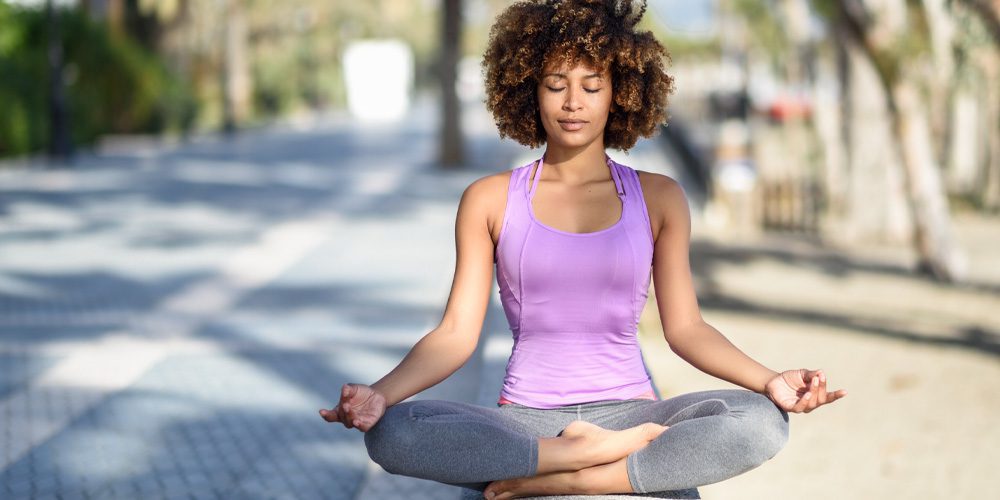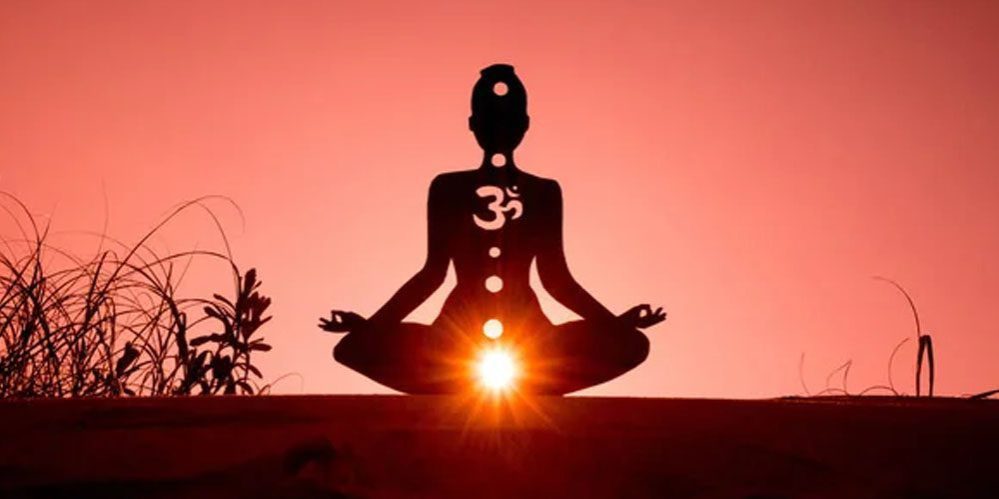El movimiento consciente, una antigua práctica arraigada en las filosofías orientales, engloba la sinergia de la actividad física y la conciencia mental. Consiste en realizar diversos ejercicios y actividades centrándose deliberadamente en el momento presente, conectando la mente y el cuerpo al unísono en armonía. A diferencia de las rutinas de ejercicio tradicionales, en las que la mente puede vagar sin rumbo o preocuparse por distracciones externas, el movimiento consciente anima a las personas a estar plenamente presentes en cada movimiento y a adoptar un sentido de atención plena.
Definición y concepto de movimiento consciente
El movimiento consciente puede definirse como un enfoque consciente de las actividades físicas que hace hincapié en la conciencia intencionada a lo largo de todo el proceso. Va más allá de la mera ejecución mecánica de ejercicios al incorporar a los movimientos técnicas de atención plena como la respiración profunda, la meditación, la exploración corporal y la conciencia sensorial. Esta práctica anima a las personas a cultivar un estado mental atento que les permita conectar profundamente con su cuerpo, sus sensaciones, sus emociones, sus pensamientos y su entorno.
El concepto de movimiento consciente tiene su origen en prácticas ancestrales como el yoga y el tai chi, que desde hace mucho tiempo reconocen la profunda conexión entre el bienestar mental y la salud física. Al integrar la atención plena en las actividades físicas, las personas son capaces de elevar su nivel de conciencia durante el movimiento, mejorando su experiencia general y cosechando numerosos beneficios para el cuerpo y la mente.
Importancia de incorporar la atención plena a las actividades físicas
La incorporación de la atención plena a las actividades físicas tiene una enorme importancia en el acelerado mundo actual. En nuestras vidas modernas, llenas de plazos, estrés y distracciones constantes de la tecnología, es vital dedicar momentos exclusivamente a estar plenamente presentes en nuestros cuerpos. Al incorporar la atención plena a las rutinas de ejercicio o a cualquier forma de actividad física -ya sean sesiones de yoga sobre una esterilla o simplemente un paseo al aire libre-, creamos un espacio para ralentizar nuestros pensamientos acelerados.
Esta concentración intencionada en el momento presente nos permite experimentar una sensación de calma y serenidad, cultivando la claridad mental y reduciendo los niveles de estrés. Además, incorporar la atención plena a las actividades físicas ayuda a fomentar una conexión más profunda entre mente y cuerpo.
Al sintonizar con nuestro cuerpo durante los movimientos, nos volvemos más conscientes de nuestra postura, alineación, patrones de respiración y las sutiles sensaciones internas. Este mayor sentido de la conciencia corporal no sólo aumenta la eficacia de nuestros ejercicios físicos, sino que también reduce el riesgo de lesiones al fomentar la forma y la técnica adecuadas.
Beneficios del movimiento consciente
Beneficios físicos
El movimiento consciente no sólo nutre la mente, sino que también aporta numerosas ventajas físicas. Uno de los principales beneficios físicos es la mejora de la flexibilidad, la fuerza y el equilibrio. Practicando el movimiento consciente, como el yoga o el Tai Chi, puedes aumentar gradualmente la amplitud de movimiento y la fuerza muscular de tu cuerpo.
A medida que vaya sintonizando con las necesidades y limitaciones de su cuerpo, notará una notable mejora de su flexibilidad con el paso del tiempo. Los ejercicios de fortalecimiento incorporados a rutinas de movimiento consciente también conducen a una mayor estabilidad y equilibrio, ayudando a prevenir caídas y lesiones.
Además, la práctica del movimiento consciente reduce el riesgo de lesiones. Al estar presente en cada movimiento, desarrollas un mayor sentido de la propiocepción (la conciencia de la posición del cuerpo en el espacio), lo que te permite moverte con precisión y minimizar la tensión en las zonas vulnerables.
Esta mayor conciencia corporal permite realizar ajustes conscientes durante los ejercicios o actividades físicas, reduciendo la probabilidad de accidentes o sobreesfuerzos. Además, la práctica de movimientos conscientes mejora la conciencia corporal y la postura.
Mediante técnicas de atención plena, como la conciencia de la respiración o la meditación consciente durante las sesiones de ejercicio, se aprende a prestar atención a cómo se mueve y alinea cada parte del cuerpo. Este aumento de la atención plena se traduce en una mejora de la postura también en la vida diaria; con la práctica, la alineación correcta se vuelve más natural incluso cuando se está sentado en un escritorio o de pie en la cola del supermercado.
Beneficios mentales y emocionales
Además de sus beneficios físicos, el movimiento consciente repercute positivamente en el bienestar mental y emocional. Una ventaja notable es la reducción del estrés y la mejora del estado de ánimo. Cuando estamos plenamente presentes en los movimientos que realizamos durante el ejercicio u otras actividades como el yoga o el pilates, creamos un espacio para que los factores estresantes se desvanezcan temporalmente a medida que la atención se desplaza hacia el interior.
El movimiento consciente actúa como una forma de meditación en movimiento que ofrece consuelo frente a las presiones cotidianas y mejora el bienestar mental general. Al liberar endorfinas durante la actividad física, nos invade una sensación de euforia y calma que mejora el estado de ánimo y la resistencia emocional.
Además, el movimiento consciente aumenta la atención y la concentración. Al redirigir la atención al momento presente, entrenamos nuestra mente para que se mantenga centrada en la tarea que tenemos entre manos.
Tanto si se trata de mantener una postura de yoga como de ejecutar movimientos precisos en Tai Chi, el movimiento consciente requiere una concentración que puede trasladarse a otros ámbitos de la vida. Esta mayor capacidad para mantener la atención mejora la productividad y la eficacia en las tareas cotidianas o las actividades laborales.
El movimiento consciente favorece el bienestar general. La combinación de actividad física y prácticas de atención plena nutre el cuerpo y la mente de forma holística.
No sólo se gana fuerza física y flexibilidad, sino que también se cultiva la claridad mental y el equilibrio emocional. La práctica regular fomenta la autoconciencia, la autocompasión y una mayor sensación de bienestar general.
Incorporar el movimiento consciente a tu rutina diaria puede tener un profundo impacto en varios aspectos de tu vida. Entre los beneficios físicos están la mejora de la flexibilidad, la fuerza y el equilibrio, la reducción del riesgo de lesiones y la mejora de la conciencia corporal y la postura.
En el frente mental-emocional, la práctica del movimiento consciente facilita la reducción del estrés, la mejora del estado de ánimo y la mejora de las capacidades de enfoque-concentración, al tiempo que promueve un estado de bienestar integral. Con estas notables ventajas esperando a aquellos que se embarcan en este viaje hacia la atención plena a través de prácticas de movimiento como el yoga o el Tai Chi, ¡no hay mejor momento que ahora para empezar a cosechar estas recompensas por ti mismo!
Diversas formas de movimiento consciente
Yoga: orígenes, estilos y asanas
El yoga, una práctica originaria de la antigua India, ha ganado una inmensa popularidad en todo el mundo por su enfoque holístico del bienestar físico y mental. Arraigado en la filosofía de la unidad y el autodescubrimiento, el yoga combina posturas físicas (asanas), control de la respiración (pranayama) y meditación para cultivar la atención plena. Existen varios estilos de yoga, cada uno con su propio énfasis y ritmo.
El hatha yoga se centra en la alineación y en mantener las posturas durante más tiempo, mientras que el vinyasa yoga sincroniza el movimiento con la respiración en una secuencia fluida. El Ashtanga yoga sigue una serie de posturas dinámicas que aumentan la fuerza y la resistencia.
Independientemente del estilo elegido, las asanas específicas desempeñan un papel vital en el fomento de la atención plena durante la práctica del yoga. La postura de la montaña (Tadasana) favorece el enraizamiento y la concentración al centrarse en la alineación y el equilibrio.
La postura del Guerrero II (Virabhadrasana II) cultiva tanto la fuerza como la atención al fomentar la presencia en el momento presente mientras se mantiene una postura poderosa. La postura del árbol (Vrikshasana) requiere concentración para mantener el equilibrio mientras se fortalecen los músculos de las piernas.
Tai Chi: historia, principios y atención plena
El Tai Chi se originó en China como arte marcial, pero ha evolucionado hasta convertirse en una elegante forma de movimiento consciente célebre por sus beneficios para la salud. Combina movimientos lentos y pausados con técnicas de respiración profunda para mejorar la conciencia corporal y fomentar la concentración mental. El Tai Chi se basa en principios como la relajación, los movimientos circulares para el flujo de energía (qi), la conexión cuerpo-mente y el equilibrio.
Los movimientos básicos o formas del Tai Chi están diseñados para que todo el cuerpo trabaje con suavidad y se relaje. Estas formas incluyen el "Agarrar la cola del gorrión", en el que los practicantes realizan movimientos fluidos con las manos combinados con cambios de peso entre las piernas para aumentar la estabilidad; la "Grulla blanca extiende sus alas", que hace hincapié en la coordinación y la flexibilidad mediante movimientos extendidos de los brazos; y las "Manos en la nube", un movimiento fluido continuo que cultiva la atención al fomentar la concentración en la alineación del cuerpo y la respiración.
Pilates: Evolución, Principios y Ejercicios Mindful Core
El Pilates, desarrollado por Joseph Pilates a principios del siglo XX, se centra en la fuerza central, la flexibilidad y el control corporal. Este método de ejercicio mente-cuerpo ha ganado popularidad por su capacidad para mejorar la postura, aumentar el tono muscular y desarrollar la conciencia corporal.
Los principios de Pilates incluyen la concentración, la precisión, el centrado, el control, la respiración y la fluidez. Para cultivar la atención plena en la práctica de Pilates, se realizan ejercicios específicos para los músculos profundos del abdomen y la zona lumbar.
Los Cien implican trabajar los músculos abdominales mientras se mantiene una posición en forma de V con movimientos simultáneos de los brazos. El Roll-Up pone a prueba la fuerza y la flexibilidad del tronco, ya que los practicantes pasan de estar tumbados a sentarse manteniendo un movimiento controlado.
Otro ejercicio eficaz es la postura de la plancha (también conocida como "El provocador"), que requiere la participación de todo el núcleo mientras se mantiene el equilibrio sobre los antebrazos o las manos. Las técnicas de respiración desempeñan un papel importante en la mejora de la atención plena durante las sesiones de Pilates.
Practicar la respiración lateral implica inhalar profundamente en la caja torácica y exhalar completamente para promover la relajación y la concentración. Coordinar la respiración con cada movimiento ayuda a sincronizar la conciencia corporal con la presencia mental durante todo el entrenamiento.
Al incorporar estas diversas formas de movimiento consciente a nuestras vidas -ya sea a través de la sabiduría ancestral del yoga, el elegante flujo de energía del Tai Chi o los precisos ejercicios básicos de Pilates- podemos cultivar una mayor atención plena dentro de nosotros mismos. Cada práctica ofrece beneficios únicos tanto para la salud física como para el bienestar mental, a la vez que nos anima a estar plenamente presentes en cada momento de nuestro viaje hacia el bienestar holístico.
Movimiento consciente en la vida cotidiana
Caminar con atención: Abrazar cada paso con conciencia
Imagínatelo: la suave caricia de la brisa matutina sobre tu piel mientras das pasos deliberados y conscientes por un sendero sereno. Caminar con atención nos invita a bajar el ritmo y apreciar el simple hecho de poner un pie delante del otro. Para sumergirte por completo en esta experiencia, empieza por conectarte a tierra.
Siente cómo el peso de tu cuerpo se distribuye uniformemente en cada pie al entrar en contacto con el suelo. A continuación, desplaza tu atención hacia la respiración, sincronizándola con tus pasos.
Con cada inhalación y exhalación, observa cómo se mueve tu cuerpo y encuentra un ritmo que te resulte natural. Esta concentración intencionada aporta claridad mental y una sensación de calma.
Los beneficios de la marcha consciente van mucho más allá de la forma física. Al involucrar plenamente nuestros sentidos en cada paso, somos capaces de cultivar un mayor estado de conciencia que se traslada a nuestra vida cotidiana.
Esta práctica se convierte en una oportunidad para dejar de lado distracciones y preocupaciones mientras conectamos profundamente con nosotros mismos y con el mundo que nos rodea. A medida que el estrés desaparece con cada zancada, nos abrimos a nuevas perspectivas y encontramos consuelo en medio del caos de la vida.
Estiramientos conscientes: un ritual para conectar cuerpo y mente
Los estiramientos suelen considerarse un calentamiento o enfriamiento necesario antes o después de la actividad física. Sin embargo, si incorporamos la atención plena a nuestra rutina de estiramientos, podemos transformarla en un ritual sagrado de autocuidado y relajación.
Empieza por buscar un lugar tranquilo donde puedas dedicar tiempo ininterrumpido a esta práctica. Mientras te colocas en posición, lleva tu atención hacia el interior y sintoniza con las sensaciones de tu cuerpo.
Permítete estar plenamente presente en cada estiramiento: observa cómo los músculos se alargan y liberan tensión con cada movimiento suave que realizas. Presta especial atención a tu respiración: inhala profundamente mientras te preparas para el estiramiento y exhala lentamente mientras lo realizas.
With each exhalation, let go of any physical or mental tension, allowing your body to surrender and relax. This mindful approach to stretching not only increases flexibility and reduces the risk of injury but also promotes a sense of calm and tranquility.
Mindful Exercise Routines: Harnessing the Power of Mind-Body Integration
Exercise is not merely about physical exertion; it can be an opportunity to nourish our minds and souls as well. By infusing mindfulness into our cardio or strength training regimen, we create space for a deeper mind-body connection.
Consider incorporating these tips into your exercise routine: 1. Set an intention: Before beginning your workout, take a moment to set a clear intention for what you hope to achieve or experience during this time.
It could be cultivating gratitude, finding joy in movement, or simply embracing the present moment. 2. Focus on breath: Throughout your workout, anchor your attention on the rhythm of your breath.
Let it guide you through each movement, syncing inhales and exhales with different exercises. 3. Tune in to sensations: Instead of mindlessly going through the motions, bring awareness to how your body feels with each movement—muscles engaged, heart rate elevated, sweat trickling down your brow.
Embrace these sensations wholeheartedly. 4. Embrace mindfulness breaks: Take short breaks during longer workouts to pause and reconnect with yourself.
Close your eyes briefly if possible and bring your attention back to your breath or perform gentle stretches to release any tension. By integrating mindfulness into our exercise routines in this way, we elevate our workouts from mere physical exertion to transformative experiences that nurture both body and mind.
Mindful Movement is Within Reach Incorporating mindful movement practices into everyday life need not be complicated or time-consuming; it simply requires intentionality and a willingness to engage with the present moment.
As you embark on your journey towards a more mindful existence, remember that each step, stretch, and workout can become an opportunity for self-discovery and inner peace. So, take a deep breath, embrace the beauty of each movement, and let mindfulness infuse every aspect of your life.
Understanding the Neurobiology of Mindful Movement
Engaging in mindful movement goes beyond the physical benefits. It also has a profound impact on our brain and nervous system.
Studies have shown that practicing mindful movement activates various regions of the brain, including the prefrontal cortex, which is responsible for decision-making and emotional regulation. This activation leads to an increase in gray matter density, resulting in enhanced cognitive function and emotional well-being.
The Role of Mindfulness in Stress Reduction
When it comes to stress reduction, mindfulness plays a crucial role. Engaging in activities like yoga or Tai Chi stimulates the relaxation response by activating the parasympathetic nervous system and dampening down the body's stress response.
This helps lower cortisol levels, reduce blood pressure, and promote an overall sense of calmness. Additionally, mindful movement practices train individuals to stay present and non-judgmental, allowing them to approach challenging situations with greater resilience.
The Power of Mind-Body Connection
One fascinating aspect of mindful movement is its ability to strengthen the mind-body connection. As we cultivate awareness during physical activities, we become more attuned to bodily sensations and movements.
This integration enhances proprioception—the ability to perceive where our body is in space—and leads to improved coordination, balance, and postural alignment. Furthermore, research suggests that a strong mind-body connection can positively impact mental health by reducing symptoms of anxiety or depression.
The Benefits Beyond the Mat
The benefits gained from practicing mindful movement extend far beyond our yoga mats or exercise routines. Regular engagement in these practices fosters neuroplasticity—the brain's ability to reorganize itself—and promotes long-term changes that influence our daily lives.
Reflexiones finales
The science behind mindful movement reveals the profound impact it has on our physical and mental well-being. By understanding the neurobiology, stress reduction potential, and mind-body connection associated with these practices, we can fully appreciate their transformative power.
Embracing mindful movement is not only beneficial for our bodies but also empowers us to live more present and fulfilling lives. So let's embark on this journey of self-discovery and embrace the wonders that mindful movement brings.

















